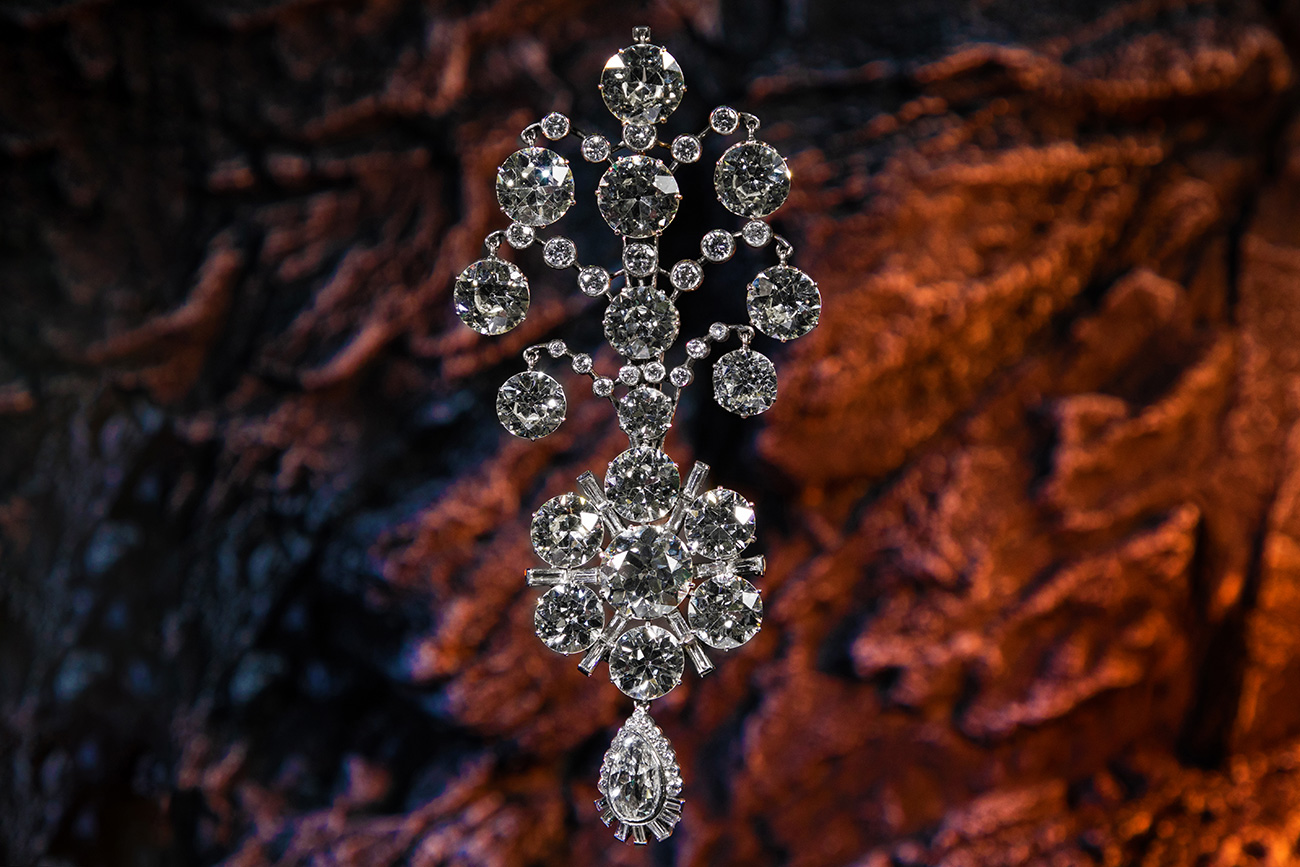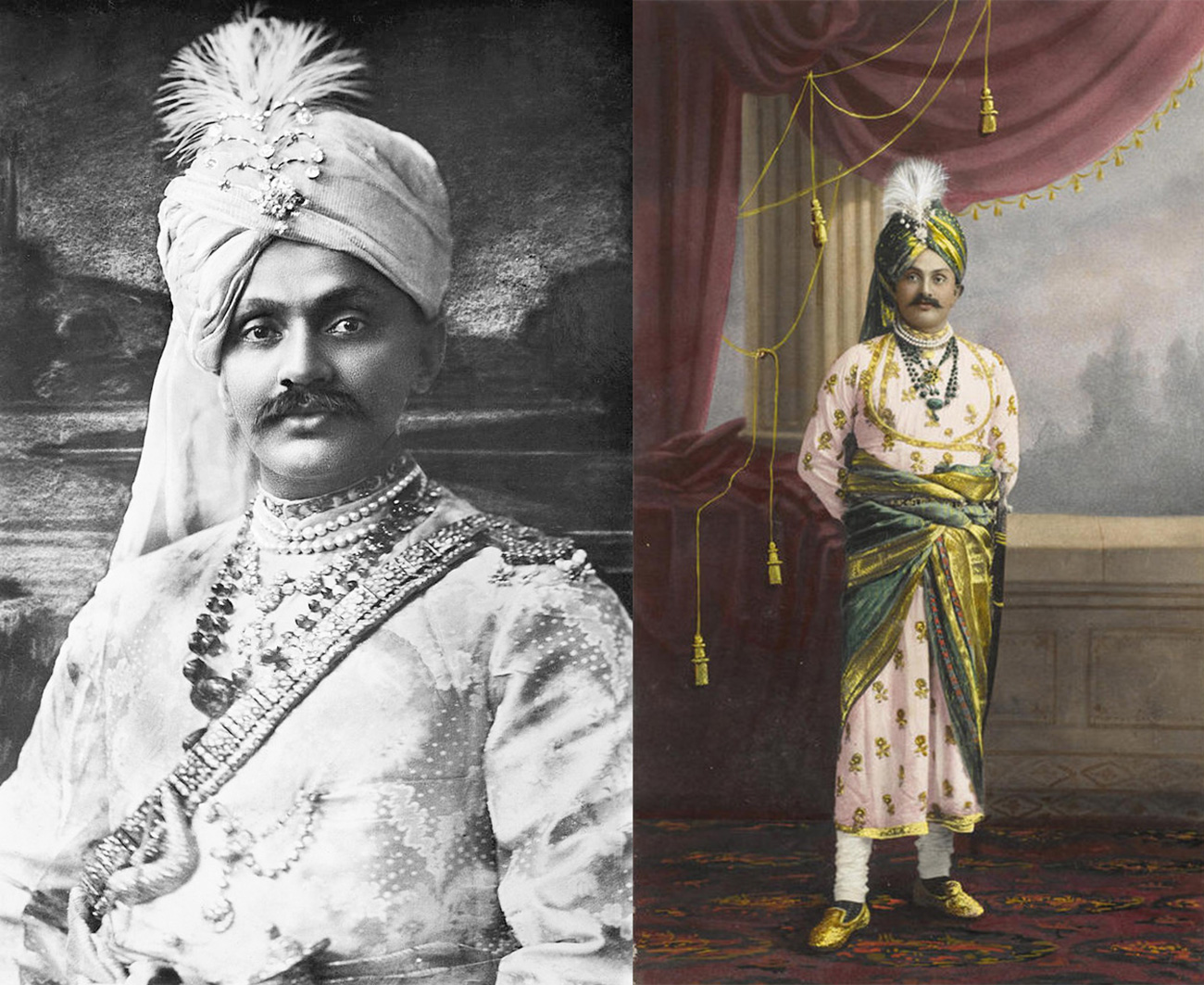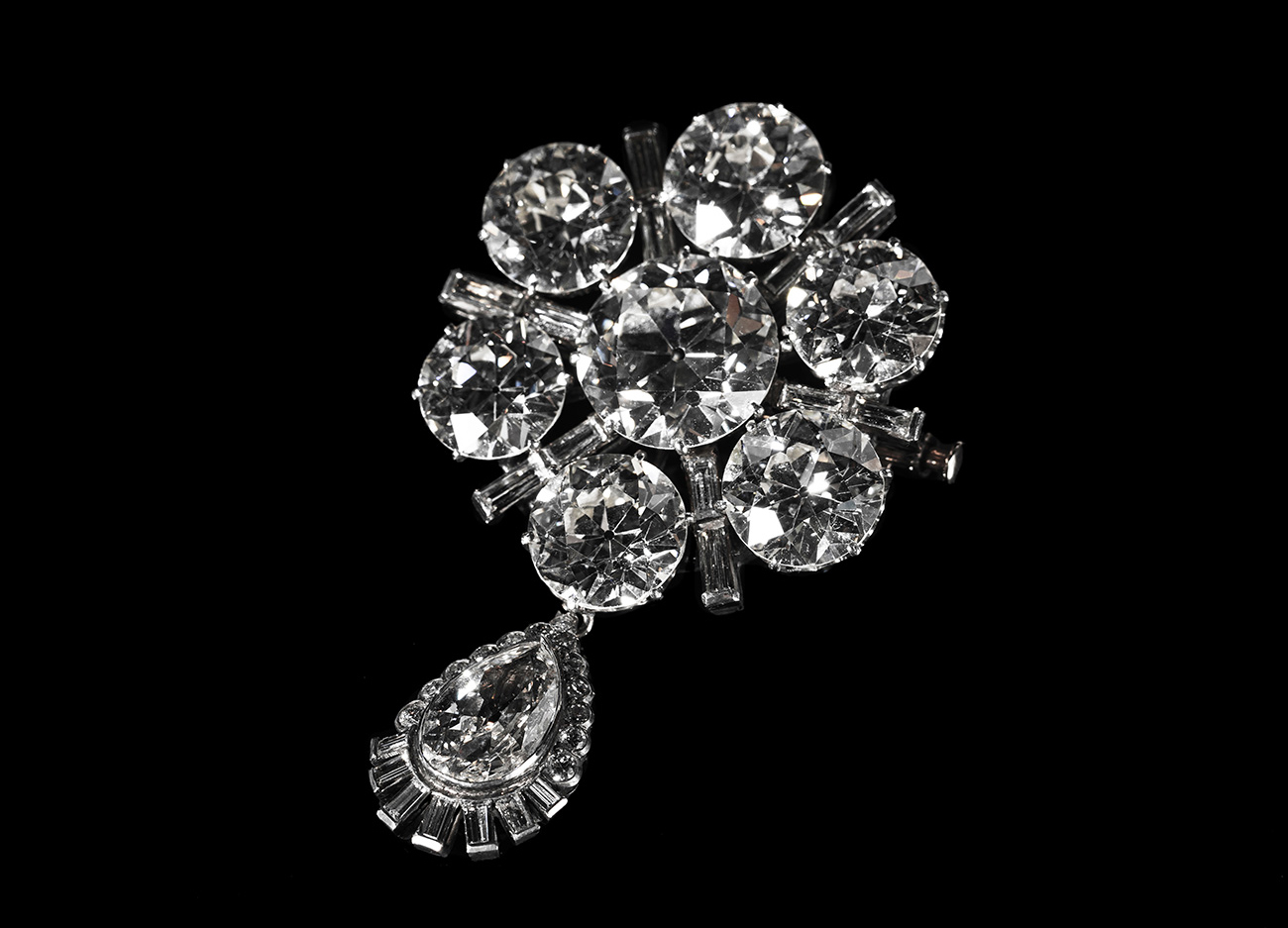


This white feather jigha, an accessory on the turban of an Indian Maharaja, is a symbol of the privilege and status of Indian imperial royalty, a tradition that dates back to the Mughal Empire in the 16th century. The Mughal social hierarchy was rigid, and the empire had well-developed jewelry trade as well as manufacturing industry. Different forms of jewelry were used to distinguish between different classes of people. The Mughal emperor's turban was often adorned with the finest and purest precious stones, which was considered an exclusive privilege to the emperor.
By 1877, when Queen Victoria of England became Queen of India, the Maharajas of India were not allowed to wear crowns as a sign of their status, which indirectly led to the development of the turban. The turban, in turn, became a symbol of India's royalty, perpetuating privilege and majesty.

Black and white portrait of H.H. Maharajah Ranjitsinji Jam Saheb of Nawanagar, ca.1908 (left)
H.H. Maharajah Ranjitsinji Jam Saheb of Nawanagar, Kathiawad, ca.1907 (right)
This white feather jigha is attributed to Maharaja Ranjitsinhji of Nawanagar (hereafter 'Sinhji'), who became Maharaja in 1907 and officially began his reign over Nawanagar. This jigha was also produced in 1907. With Maharaja Sinhji's rule and wise administration, Nawanagar began its modernization from the feudal era.
Maharaja Sinhji was also an accomplished cricketer and a great connoisseur of precious stones and jewelry. Jacques Cartier, the then director of Cartier, was a close friend of Maharaja Sinhji. The two had a cooperative relationship, where Jacques would ask for Sinhji's advice before buying gems, while Sinhji would ask Jacques to design jewelry pieces for himself.

This white feather jigha is a jigha turban accessory in form, but its shape is unmistakably Western with Belle Époque features; its top is set with baguette-shaped old-cut and pear-cut diamonds in white gold rather than the traditional gold bezel setting; the back is fitted with a feather rest and the lower part detaches for practicality, so the jigha could also be worn as a brooch. The arrangement of the upper layer of diamonds was initially more scattered; it was modified and embellished during the reign of Ranjitsinhji's nephew Maharaja Digvijaysinhji, heir to the princely throne, to give it a more compact form.